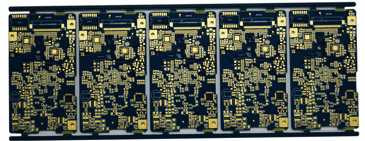The current world requires innovation in high-performance electronic devices, and these devices require PCB laminates with highly developed performance, improved electrical properties and better mechanical stability. PCB laminate manufacturers are now working hard to provide a variety of high-performance laminates. These new circuit board laminates have rich properties that can suppress the problems associated with the flame retardancy of traditional epoxy-based FR4 laminates and laminates. The temperature of electronic components is no longer a challenge. This article is a detailed guide that points out the basic knowledge of laminates in the PCB manufacturing process. For the short drive of various types of laminates, the characteristics and importance of laminates and the new development of laminate technology are what it tries to emphasize.
The importance of PCB laminate
Before briefly introducing the importance of PCB laminates, first briefly introduce the basic knowledge of circuit board laminates and their detailed information. This article will provide the exact understanding you should have when determining the materials used in the manufacture of printed circuit boards, as well as choosing the type of laminate suitable for a particular project.

A stack of materials laminated in the trace layer inside the circuit board within the required time by applying pressure and heat is called PCB lamination. This makes it a one-piece product, which is laminated with top and bottom prepreg and then copper foil. In short, it includes a typical process of laminating a non-conductive substrate with conductive tracks and pads etched from a copper sheet, which helps to obtain a smooth circuit connection through the mechanical support of the printed circuit board. The basic materials used and processed in PCB manufacturing include copper clad laminate, Pre-preg (resin impregnated B-stage cloth), copper foil and laminate. These are made by curing the temperature and pressure layers of cloth or paper with thermosetting resins that form a uniformly thick monolith to obtain the final laminated substrate.
The use of fiber material or cloth, the ratio of cloth to resin and the resin material determine the type of laminate. These laminates can be determined according to their free flame-retardant level, tensile strength, glass transition temperature, loss coefficient, shear strength, dielectric constant, and expansion coefficient that reflects the change in thickness with temperature.
FR-4 has become a standard configuration and is now replaced by many new technologies that can provide more effective electrical solutions. They are composed of woven glass fiber with epoxy resin and can be applied to switches, arc shields, relays and screw terminals. Considering the importance of environmental safety, halogen-free circuit board laminates are becoming an upcoming innovation trend. Polyimide laminates have rich characteristics, physical flexibility and high heat resistance in high-temperature fuel cells, and are in increasing demand in the aerospace, military, and electronics industries. One of the strong laminates used in outdoor environment applications has good ceramics that can withstand high temperature conditions, which proved to be a suitable solution. There is no doubt that when high-speed data transmission is required, it may prove to be expensive, but it has applicability in solar projects. Thin printed circuit board laminates are used for high frequency applications, such as the use of thinner substrates in millimeter wave or microwave applications.
Before choosing the most suitable PCB technology for electronic design and manufacturing projects, one should also pay attention to the performance of laminates that are currently trending in research and development. Laminates with precise mechanical, thermal and electrical properties should also have sufficient and tough chemical resistance, moisture resistance and flame retardancy. Other characteristics that need attention are foil resistance, surface and edge corrosion resistance, fine surface finish and thickness tolerances, flammability and water absorption.
It boils down to the main question of concern, why is there an important feature of using laminates in PCB manufacturing? The importance of laminates in PCB manufacturing includes improved impedance control in dynamic thermal response, low moisture absorption, better thermal management and consistent performance. With new discoveries and continuous innovations in all electronic tasks, high-frequency laminates have become a core factor in the growth of PCB technology.